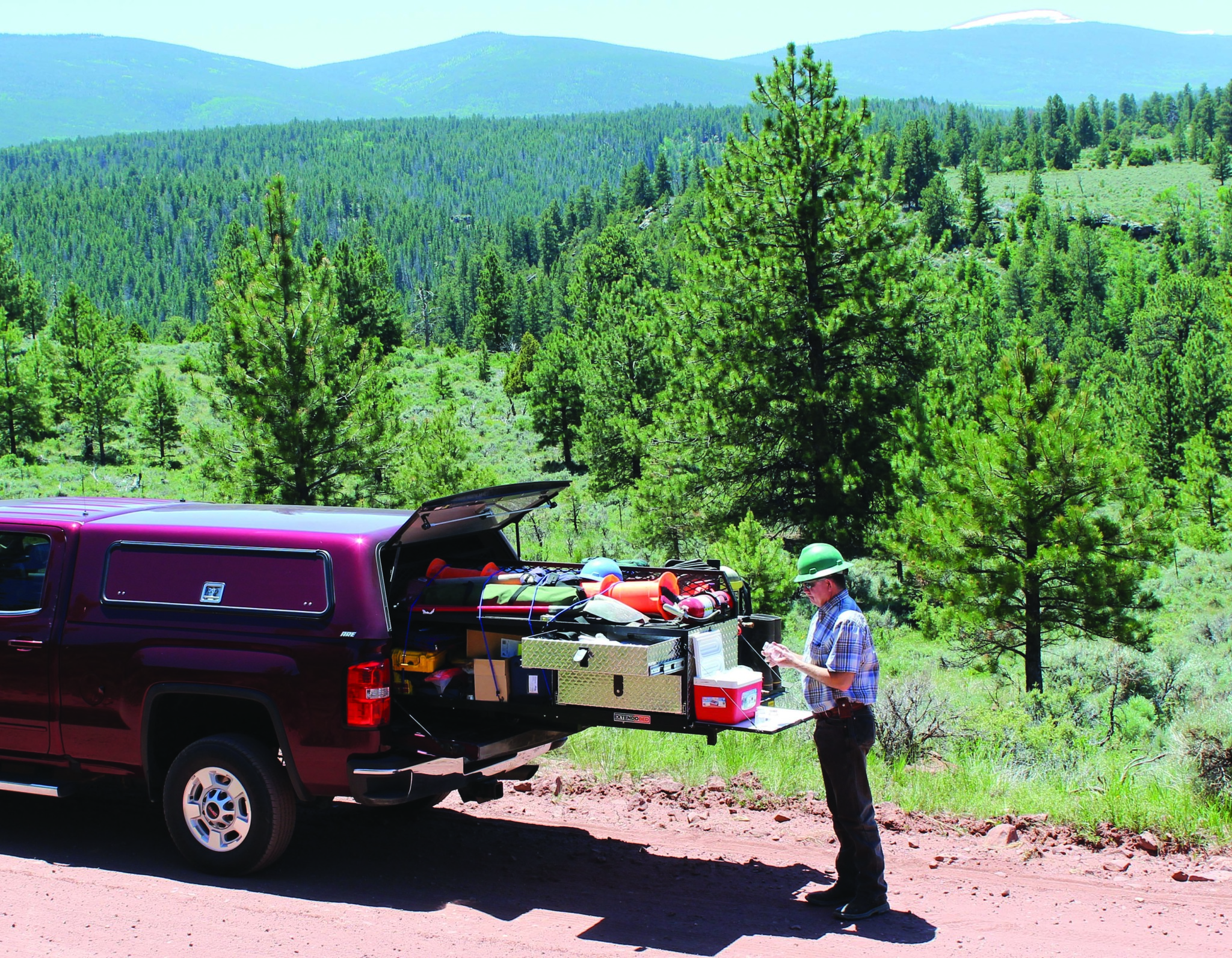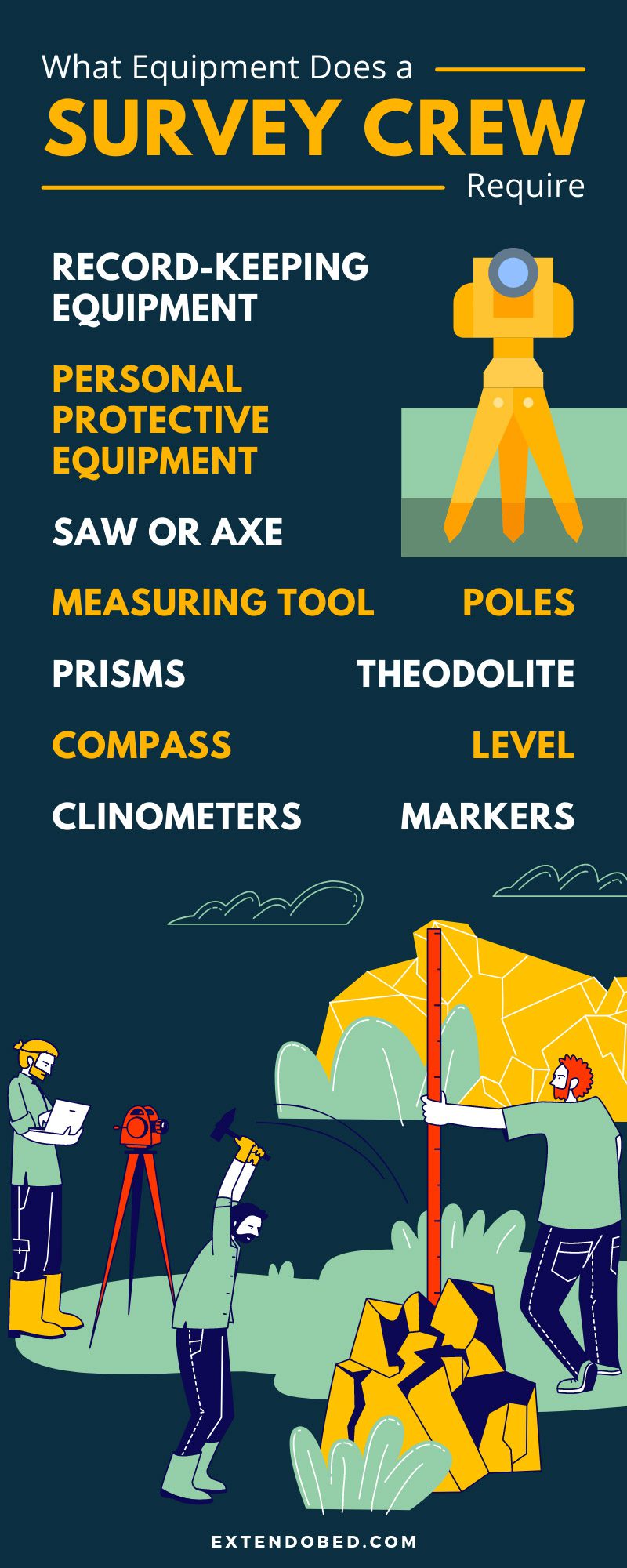
Land surveying isn’t a simple job—it requires tons of precise equipment and a lot of knowledge to properly handle and measure everything. You carry around so much equipment that regular trucks and vans usually can’t handle it all. To help you understand what equipment a survey crew requires, just read this list.
There isn’t a standard way that people choose to keep their findings, but you’ll need to invest in some method to record everything your team measures in the field. Plenty of people use paper and clipboards, but you can also use electronic devices if you want.
Although most of the equipment that survey crews use is light, there’s still a chance for injury on the job—if not from the equipment, then from the environment. A good business will provide protective gear to its employees to reduce the risk of injury on the job. Things like gloves or safety jackets can save the life and body of a survey crew member.
Working outside in nature means that you’ll never have optimal working conditions. Trees and plants will obstruct your paths, and you’ll need to move them to perform a good job. Providing saws or axes to clear out small areas for equipment and pathways can make an impossible job very easy.
One of the most basic tools a survey crew needs is a measuring tool. Your crew will often need to precisely measure large distances between two or points. There’re a variety of tools that you can use to accomplish this task, like laser measures or tape measures. It’s really up to you how much you want to spend, and which type of tool makes the most sense for your company and crew.
The theodolite is an essential piece of equipment for any survey team, as it helps measure angles across vast distances. A team member can use the telescope on the theodolite to measure precise angles and easily record the results. This will help with basic surveying and makes every other step easier.
Traveling around in places you don’t know can often cause you to lose your bearing. This is a major issue for land surveying. Luckily, a good compass can help your crew know exactly where they are and what direction they’re facing. You can also use a compass to measure distance if your other methods aren’t working.
This is a tool that people use to measure slopes and inclines, which is very important for land surveying. It accurately measures the angle and degree that a slope climbs and is something that every land surveying crew needs to accurately measure the surrounding area.
Levels are tools that measure the flatness of something or the flatness of two points to see if they’re even. Levels are useful for determining if there’s a difference in height between two points and will tell you if a surface is flat. There’s a variety of different styles of levels, as some are digital and others are manual, but they all essentially measure the same thing.
During land surveillance, it becomes beneficial to use magnetic locators to find any metals in the ground. This is important as piping or metal structures can greatly change how people need to approach the area. Metal detectors are the best tools for finding any hidden or buried infrastructure.
Another tool that every surveyor team needs is a set of poles. The poles have universal uses in surveying, as they can solve a lot of problems, but they typically serve as markers or equipment stands. A lot of the equipment needs poles for steady and accurate readings.
Prism systems are reflectors that sit at the end of poles to help reflect lights. By themselves, they serve little purpose, but they help reflect light back at electronic distance measurement instruments (EDM). This lets you set up a pole and measure the distance from that pole to anywhere you can see accurately.
These are tools that can measure extreme distances very easily with the use of Prisms and poles. It does this by using electromagnetic waves to send and receive information about the distance between two spaces. This helps you build blueprints and survey land very quickly.
Like poles in some ways, tripods and mounts are very useful for accurate and consistent measurements. Holding an EDM or level when taking measurements can cause a lot of problems. Tripods and mounts prevent this by holding all the equipment for your crew as they operate the machinery. Without good tripods, all your data would be incomplete or inaccurate.
Working outside can get a bit confusing, especially when you’re working in new areas so often. Investing in good markers that don’t blow away so you can get an accurate lay of the land can really save the day and make the job easy. You’ll want a variety of markers so you can easily identify what you’re marking at just a glance.
It might seem a bit silly, but a good survey team will use a GPS to help them with the lay of the land. At the very least, it’ll help the team get to the place they need to be. A GPS also helps get rough estimates and can help you organize across the whole crew. Investing in a good GPS will only speed up the surveying process.
One thing you might notice if you’re searching for surveying equipment is a lot of tools combine this equipment. A good GPS might include a digital or manual compass, or a theodolite might include a clinometer in its design. This is a good thing, as it’ll save you space when storing all this equipment in a truck or van. You’ll likely find it difficult to store all this equipment in a single van, so the extra space you save from these multi-tools is very useful. You can also invest in a good truck storage organizer, which can make it easy to carry and unload everything.
This list is the answer to the question, “What equipment does a survey crew require?” This list isn’t exhaustive, but you should know the basics of what a team might need to run a full survey job.

Copyright © 2024 Extendobed®